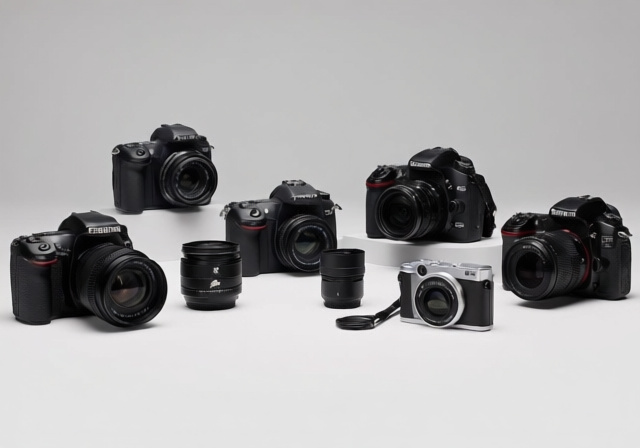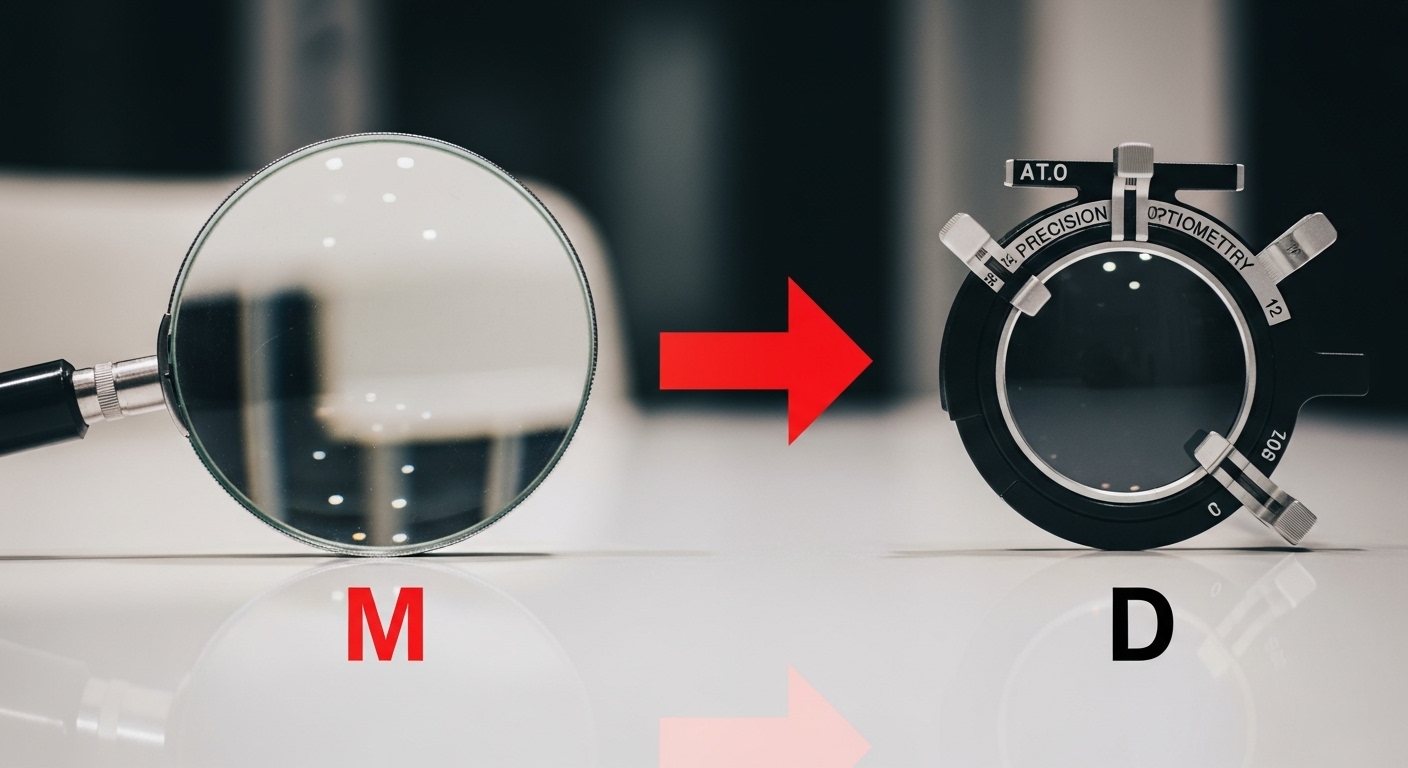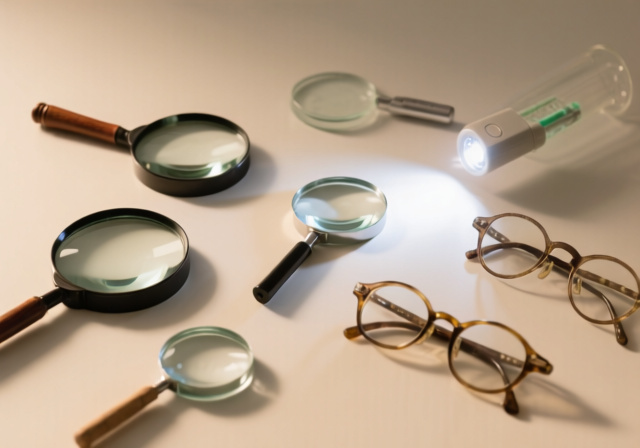



Understanding optical measurements can be confusing when you’re trying to choose the right lens for your needs. Whether you’re a photographer selecting close-up lenses, someone shopping for reading glasses, or a birder adjusting your binoculars, knowing the difference between magnification and diopter measurements is essential.
Diopter measures the optical power and curvature of a lens, while magnification describes how much larger an object appears through that lens. These measurements aren’t interchangeable but are related through a simple mathematical formula that helps you understand exactly what you’re getting with any optical device.
After working with various optical equipment over the years and helping countless photographers understand their gear, I’ve found that mastering these two concepts opens up a world of possibilities. From macro photography to vision correction, understanding how diopters and magnification work together will help you make informed decisions and avoid costly mistakes.
In this comprehensive guide, we’ll break down both measurements, show you how to convert between them, and provide practical examples for photography, reading, and other applications. You’ll learn exactly when to use each measurement and how to choose the right optical equipment for your specific needs.
Diopter measures the optical power (or strength) of a lens based on its focal length. It’s the standard unit used in optometry and optics to describe how much a lens bends light. A diopter is defined as the reciprocal of the focal length measured in meters. Positive diopters indicate converging lenses that magnify, while negative diopters indicate diverging lenses that correct nearsightedness.
Diopter: The optical power of a lens measured as 1/focal length (in meters). A 4-diopter lens has a focal length of 25cm (1/4 meter).
Magnification, on the other hand, is simply the ratio of how large an object appears through a lens compared to its actual size. If a lens makes an object appear twice as large, it has 2x magnification. This measurement is more intuitive for most people because it directly relates to what we see – something is “twice as big” or “three times larger.”
Magnification: The size increase ratio of an object when viewed through an optical device. 3x magnification means the object appears three times larger than normal.
The key difference lies in what each measurement tells you. Diopters describe the lens’s physical properties (its curvature and power), while magnification describes the visual effect (how much larger things appear). This distinction matters because the same magnification can be achieved with different lens designs, each with different diopter values and working distances.
Think of it this way: diopter is like a car’s engine size, while magnification is like its top speed. They’re related, but they tell you different things about the vehicle’s performance and characteristics.
The conversion between diopters and magnification follows a straightforward formula. This relationship is crucial for understanding what you’re actually getting when you buy optical equipment. The formula accounts for the fact that magnification isn’t just about lens power – it’s about how that power relates to normal vision.
The conversion formula is: Magnification = (Diopter ÷ 4) + 1
This formula works because the human eye has a natural focusing power of approximately 4 diopters at its resting state. When you add a lens with a certain diopter value, you’re effectively adding to the eye’s natural power. The “+1” in the formula represents the baseline vision without any additional magnification.
Quick Summary: To convert diopters to magnification, divide the diopter value by 4 and add 1. This gives you the magnification factor (e.g., 8 diopters = 3x magnification).
Let’s break down some common conversions:
To convert in the opposite direction (magnification to diopters), use: Diopter = (Magnification – 1) × 4
For example, if you need 5x magnification: (5 – 1) × 4 = 16 diopters. This means you’d need a 16-diopter lens to achieve 5x magnification.
Understanding this conversion is particularly important when you’re shopping for optical equipment. Some manufacturers list diopter strength, others list magnification power, and knowing how to convert between them ensures you get exactly what you need.
function calculateMagnification() {
const diopter = parseFloat(document.getElementById('diopterInput').value);
if (!isNaN(diopter)) {
const magnification = (diopter / 4) + 1;
document.getElementById('conversionResult').innerHTML = `${diopter} diopters = ${magnification.toFixed(2)}x magnification`;
document.getElementById('conversionResult').style.display = 'block';
}
}
function calculateDiopter() {
const magnification = parseFloat(document.getElementById('magnificationInput').value);
if (!isNaN(magnification)) {
const diopter = (magnification - 1) * 4;
document.getElementById('conversionResult').innerHTML = `${magnification}x magnification = ${diopter.toFixed(2)} diopters`;
document.getElementById('conversionResult').style.display = 'block';
}
}
Different applications use different measurements, and knowing which one matters for your specific needs is crucial. Let me share some practical scenarios from my experience working with various optical equipment.
In optometry, diopters are the standard measurement. Your eyeglass prescription uses diopters because it precisely describes the corrective power needed. When shopping for reading glasses, you’ll see powers listed in diopters (typically +1.00 to +4.00). These diopter values directly relate to the correction needed for presbyopia or age-related farsightedness.
For reading glasses, a 1.00 diopter lens provides mild magnification suitable for reading small print, while a 4.00 diopter lens offers significant magnification for detailed work. The key advantage of using diopters here is that eye care professionals can precisely match the lens power to your specific vision needs.
Photographers encounter both measurements. Close-up lenses and diopters are used in macro photography to increase magnification. These screw-on lenses are rated in diopters, and understanding how they translate to actual magnification is essential for planning your shots.
For example, a +4 diopter close-up lens will give you approximately 2x magnification. When combined with your camera’s lens, this allows you to focus much closer and capture larger-than-life images. I’ve found that starting with lower diopter values (+1 or +2) gives you more working distance and flexibility, while higher diopters (+8 or +10) provide extreme close-ups but require you to be very close to your subject.
Binoculars typically use magnification as their primary measurement (e.g., 8×42 binoculars have 8x magnification). However, most quality binoculars include a diopter adjustment on one eyepiece to compensate for vision differences between your eyes. This adjustment usually has a range of ±3 to ±4 diopters.
When using binoculars, you first focus using the central focusing wheel, then adjust the diopter setting for your right eye to achieve sharp, clear images. This feature is crucial for photographers who wear glasses, as it allows them to use binoculars without their prescription eyewear. If you’re wondering how to use binoculars with glasses, understanding the diopter adjustment is key.
Jewelers, watchmakers, model builders, and other craftsmen often use magnifying visors or desk lamps with built-in magnifiers. These products may be rated in either diopters or magnification, depending on the manufacturer. For detailed work, professionals might use multiple lenses or switch between different diopter strengths depending on the task.
I’ve found that craftspeople prefer lower diopter values (2-4) for general work because they provide a good balance between magnification and working distance. Higher diopters (8-10) are reserved for the most detailed work where you need maximum magnification and can work very close to your subject.
This comprehensive chart shows the relationship between diopters and magnification, along with typical working distances and common applications. Use this as a quick reference when choosing optical equipment.
| Diopter | Magnification | Focal Length | Working Distance | Common Uses |
|---|---|---|---|---|
| 1 | 1.25x | 1000mm | 1000mm | Mild reading aid |
| 2 | 1.5x | 500mm | 500mm | Reading books |
| 3 | 1.75x | 333mm | 333mm | Computer work |
| 4 | 2x | 250mm | 250mm | Standard reading glasses |
| 5 | 2.25x | 200mm | 200mm | Hobby work |
| 6 | 2.5x | 167mm | 167mm | Craft work |
| 8 | 3x | 125mm | 125mm | Macro photography |
| 10 | 3.5x | 100mm | 100mm | Precision work |
| 12 | 4x | 83mm | 83mm | Jewelry making |
| 15 | 4.75x | 67mm | 67mm | Watch repair |
| 20 | 6x | 50mm | 50mm | Extreme close-up |
✅ Pro Tip: The working distance shown is the focal length of the lens. For comfortable viewing, you’ll typically want to work at slightly less than this distance.
Notice how higher diopters result in shorter working distances. This trade-off is crucial to understand – higher magnification means you need to be closer to your subject. This is why surgeons and watchmakers often use specialized optical systems that maintain working distance while providing high magnification.
When choosing between diopter and magnification specifications, several factors come into play. Understanding these will help you select the right optical equipment for your specific needs.
Higher diopter values mean shorter working distances. If you need to maintain distance from your subject (for example, when soldering or working with chemicals), you’ll want lower diopter values even if it means less magnification. Photographers doing macro work often struggle with this – high diopter close-up lenses provide great magnification but require you to be extremely close to your subject, which can cast shadows and limit lighting options.
As magnification increases, field of view decreases. This is a fundamental trade-off in optics. A 2x magnifier might let you see an entire paragraph of text, while a 6x magnifier might only show a few words at a time. Consider whether you need to see context around your subject or focus on fine details.
Different tasks require different approaches. Reading needs less magnification than precision work. Photography might require specific diopter strengths to achieve the desired subject size. Magnification comparison between devices matters when choosing between binoculars and spotting scopes for wildlife observation.
If you wear glasses or have vision correction needs, this affects your choice. Many optical devices have diopter settings with glasses to accommodate different prescriptions. Understanding your own diopter needs helps you choose equipment that works with your vision rather than against it.
Higher magnification often means narrower eye relief and more strain during extended use. For long work sessions, lower magnification with better ergonomics might be more comfortable than maximum magnification that causes fatigue.
No, diopters and magnification are different measurements. Diopters measure the optical power of a lens based on its focal length, while magnification describes how much larger an object appears. They’re related through the formula: Magnification = (Diopter ÷ 4) + 1. For example, a 4-diopter lens provides 2x magnification.
2X magnification equals 4 diopters. Using the conversion formula: Diopter = (Magnification – 1) × 4. So (2 – 1) × 4 = 4 diopters. This is a common measurement for standard reading glasses and basic magnifying lenses.
5 diopters equals 2.25x magnification. Using the formula: Magnification = (5 ÷ 4) + 1 = 1.25 + 1 = 2.25x. This level of magnification is good for detailed hobby work and intermediate crafting tasks.
2.00 diopter indicates a lens with moderate optical power that provides 1.5x magnification. This is commonly found in mild-strength reading glasses suitable for people with early presbyopia or those needing slight enlargement for reading small print. The lens has a focal length of 500mm.
Higher diopter lenses have shorter focal lengths, which means they achieve focus closer to the lens. This is a physical property of optics – as lens curvature and power increase, the focal point moves closer to the lens surface. This trade-off means higher magnification always comes with reduced working distance.
Yes, you can stack diopter lenses, but the results aren’t perfectly additive. When stacking, you add the diopter values together, not the magnification. For example, a +2 and +3 diopter lens together give you +5 diopters (2.25x magnification), not 1.5x + 1.75x. Stacking can reduce image quality and increase aberrations.
Understanding the relationship between diopters and magnification is essential for anyone working with optical equipment. Whether you’re a photographer, crafter, or someone needing vision correction, knowing how to convert between these measurements helps you make informed decisions.
Remember the key formula: Magnification = (Diopter ÷ 4) + 1. This simple equation is your key to understanding any optical device’s specifications. Consider your specific needs – working distance, field of view, and intended use – before choosing between different diopter or magnification values.
For photographers, understanding magnification in binoculars and other optical equipment will help you choose the right gear for your needs. The diopter adjustment on your camera’s viewfinder or binoculars isn’t just a technical detail – it’s a tool for achieving sharp, clear vision tailored to your eyes.
As optical technology continues to evolve, these fundamental measurements remain the foundation of how we describe and compare lenses. Master them once, and you’ll be equipped to evaluate any optical equipment with confidence.







